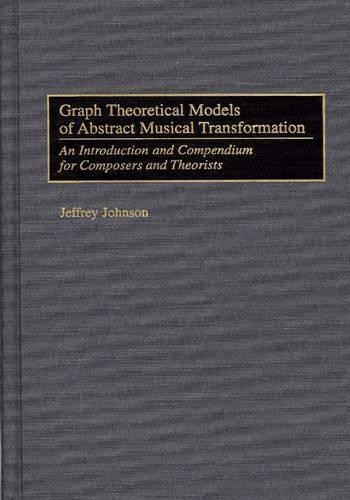
Graph Theoretical Models of Abstract Musical Transformation: An Introduction and Compendium for Composers and Theorists
(Hardback)
Publishing Details
Graph Theoretical Models of Abstract Musical Transformation: An Introduction and Compendium for Composers and Theorists
By (Author) Jeffrey Johnson
Bloomsbury Publishing PLC
Greenwood Press
21st August 1997
United States
Classifications
Tertiary Education
Non Fiction
781.3
Physical Properties
Hardback
216
Width 156mm, Height 235mm
567g
Description
An introduction to a way of modelling musical surfaces for theorists and for generating precompositional relationships for composers, this music theory reference work introduces, classifies and enumerates graph theoretical models for musical transformations in compositional and analytical applications. It also provides a practical application of musical applications for students of graph theory and could serve as an introduction to the further cross-integration of these two disciplines. Of interest to scholars, advanced music theory students and composers, this work endeavours to facilitate the expression and understanding of musical ideas by presenting an unexplored way of notating relationships between transformational objects that is not attached to specific compositional or analytical systems. Graph theoretical models of abstract musical transformations supplement and refine the ability to articulate orderings with pitch structures in analytical environments. An extended analysis of the opening section of "Form IV: Broken Sequences" by Stefan Wolpe is used as a demonstration. The use of these diagrams to generate compositional surfaces differs slightly from their use in analysis: an analytical model relates to a single musical surface, whereas compositional applications can be used to generate any potential surface derived from construction of the graphs.
Author Bio
JEFFREY JOHNSON is Associate Director of Artistic Education and Chair of the Music Theory Department at the renowned Boys Choir of Harlem. He has degrees in musical composition from Boston University, Eastman School of Music, and Ithaca College. He is an active composer, conductor, and theorist. His first book, Thesaurus of Abstract Musical Properties was published by Greenwood Press in 1995.
